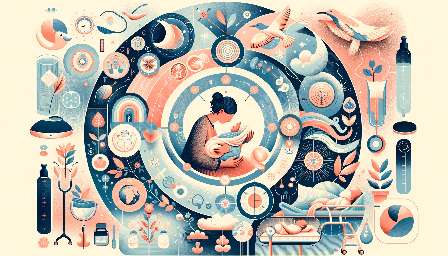Bringing a child into the world is a remarkable and beautiful experience, but it's also accompanied by the undeniable reality of pain. This pain is a natural part of the process, but many mothers seek methods to help manage it effectively. While medical pain relief options are available, more and more women are turning to natural pain relief methods to manage the discomfort associated with labor and childbirth.
The Importance of Natural Pain Relief
Natural pain relief methods have gained popularity as women explore options that are less invasive and have fewer potential side effects. These methods often focus on empowering women during labor and childbirth, allowing them to be active participants in the process rather than passive recipients of medication.
Benefits of Natural Pain Relief Methods
There are several compelling benefits to consider when exploring natural pain relief methods for labor and childbirth:
- Empowerment and Control: Natural pain relief methods empower women to take an active role in managing their labor and childbirth experiences. This can lead to a greater sense of control and confidence during this significant life event.
- Reduced Risks: Many medical pain relief options, such as epidurals, carry potential risks and side effects. Natural pain relief methods can offer an alternative with fewer associated risks, providing a safer option for mothers and babies.
- Promotion of Movement and Comfort: Natural pain relief methods often encourage movement and position changes, which can promote comfort and optimal positioning for the baby during labor. This can contribute to a smoother and more efficient labor process.
- Hydrotherapy: The use of water, such as soaking in a tub or taking a warm shower, can help relieve pain and provide relaxation during labor.
- Breathing and Relaxation Techniques: Deep breathing, visualization, and other relaxation techniques can help mothers manage pain and reduce stress during contractions.
- Massage and Acupressure: Gentle massage and targeted pressure techniques can offer relief from discomfort and promote relaxation.
- Positioning and Movement: Changing positions, walking, or using a birthing ball can help mothers find comfortable and effective ways to manage labor pain.
- Hypnobirthing: This method involves using self-hypnosis and relaxation techniques to manage pain and create a positive mindset during labor and childbirth.
- Supportive Environment and Continuous Labor Support: Having a supportive birth environment and continuous support from a doula or birth partner can contribute to a more positive and comfortable labor experience.
- First Stage: This stage involves the onset of labor through the full dilation of the cervix. During this stage, natural pain relief methods can help manage the discomfort of early labor, active labor, and transition before reaching the pushing stage.
- Second Stage: The second stage begins with full cervical dilation and concludes with the birth of the baby. Natural pain relief methods can provide comfort and support as the mother focuses on pushing and delivering her child.
- Third Stage: This stage involves the delivery of the placenta. Natural pain relief methods can continue to offer comfort and relaxation during this final stage of labor.
Common Natural Pain Relief Methods
There are various natural pain relief methods that mothers can explore to manage discomfort during labor and childbirth. Some of the most commonly used methods include:
Integration with Stages of Labor
When exploring natural pain relief methods, it's important to understand how these methods can align with the stages of labor. The three primary stages of labor include:
Empowerment through Natural Pain Relief
Natural pain relief methods in labor and childbirth offer mothers the opportunity to actively participate in their birthing experiences. These methods provide a range of benefits, from promoting movement and comfort to empowering women to take control of their labor journey. While every birth experience is unique, exploring natural pain relief options can lead to a more empowering and positive childbirth experience for many women.


